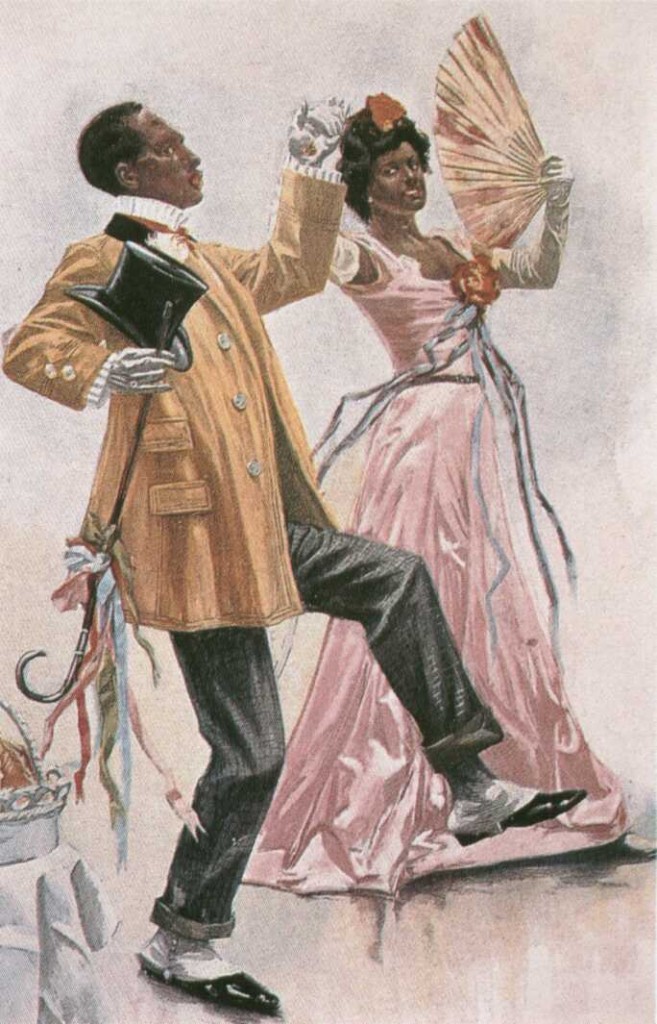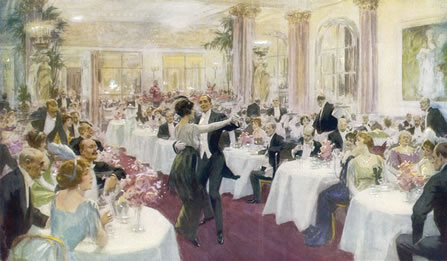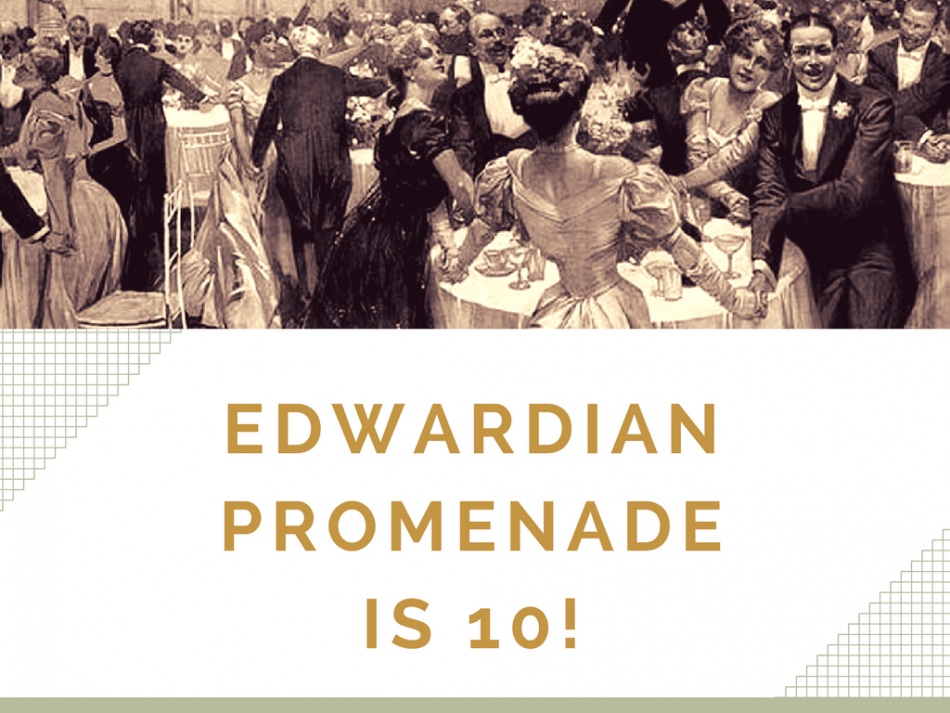Welcome to the most influential dances of the early 20th century. These dances have shaped our social dance trends for almost 100 years. Below is an excerpt from Dances Through Time V2, which explains each dance, but you can also watch the dances individually in each section
ANIMAL DANCES
At the beginning of the 20th century, industrialization brought employment to the cities, so all classes of people were drawn to urban areas in order to participate in the new urban capitalism. As the society moved from aristocracy to democracy, so did the dances. There were popular assembly rooms, dancing in restaurants, increased prosperity, and a growing sense of individualism. Dances that were once the prerogative of the elite, were now enjoyed by all the classes. Dancing, in fact, represented a new freedom. People turned to the inspiration of animal behavior for their “Declaration of Independence.”
The animal dances were a reaction against inhibited and restricted movements (as well as against an antiquated lifestyle). New inventions happened faster than dance teachers could solidify and teach. These dances were adopted by all sorts of people without the training or experience to dance in “proper” positions with “correct” steps. Dance followed the new ragtime beat which was built on syncopation. Fast and slow beats alternated through improvisation. The uneven rhythms naturally brought wild steps, thus, the ballrooms became “playgrounds” for “grown ups”.
The new dance revolution developed a few new rules:
- Parallel feet replace turned out feet. (due to dance steps moving in lines and squares, rather than circles. These angular step patterns reflected the new ‘mechanical’ era).
- The man dances forward and the woman dances backward. (due to shorter skirts and the need for the man to steer the lady through an infinity of improvised movements. The turning positions of the previous century were mostly abandoned).
Amidst the craze of new dances were:
Fox trot, horse trot, kangaroo hop, duck waddle, the squirrel, the chicken scratch, the turkey trot, and the grizzly bear. The Fox Trot is the only animal dance whose legacy has lasted until today. It was attributed to Harry Fox who created a trotting dance to ragtime music in a 1913 Ziegfeld Follies. The ragtime movement of music and dance began in America, and has influenced our lives until today.
CASTLE WALK
The Castle Walk is built on the ‘one step’.
That simply means one step to the beat.
The one step came from the animal dances but removed the hopping motion to become a vibrant fast walk.
Irene and Vernon Castle, an American woman and an Englishman, created a dance team and a school which influenced the refinement of American social dance for our century. The style they gave, and the steps they taught, became the backbone of ballroom dance, from Arthur Murray to today’s ballroom dance styles. They took the early ragtime dances and invented rules which bridled the energy and enthusiasm fostered by the up-tempo music. Their rules legitimized the new ragtime fad of music and dance.
.
Castle house Suggestions:
Do not wiggle the shoulders
Do not shake the hips
Do not twist the body
Do not flounce the elbows
Do not pump the arms
Do not hop-glide instead
Avoid low, fantastic and acrobatic dips
The Castles took the basic Ragtime rhythms and refined them to created an elegant style for all to follow.
In all, they brought grace, dignity, stateliness, good manners and good taste to the realm of social dance.
TANGO
In 1880 the Tango represented the epitome of degradation. It was danced in the brothels of Argentina, where it reflected the relationship between a pimp and a prostitute. Parisian travelers took the new dance fad back to Paris, as a trophy, after their visits to the Argentinean houses of ill repute. When it came to Paris, it evolved into a chic statement for society. It became smooth, gliding, and undulating. It imitated the “sensuous grace of the tiger”. It was “tamed” from the Argentine version. 1913 was the year of amazing Tango popularity, in the U.S. (as well as Paris). Tango teas were in vogue for all age groups. Cities went Tango mad. The Tango was considered an incitement for desire. As the popularity grew around the sensuality of the Tango figures, new figures were invented continuously. Thus the Tango of the early part of our century, contains more than 100 different figures. It was immortalized by Rudolf Valentino in “Four Horsemen of the Apocalypse”, a movie reflecting society’s changes throughout WWI. Ultimately, the Tango became an exquisitely popular exhibition dance.
MAXIXE
The “Machiche” was called the Tango Bresilienne. The acceptance and popularity of the Tango, coming from Argentina, paved the way for this South American dance, the Maxixe, which came from Brazil. The Maxixe was created by 3 converging elements:
The European polka gave the movement.
The Cuban Habanera gave the rhythm.
And the African styles contributed to the syncopation.
The 2-step plus the swooping body movements created a sensational alluring dance.
It’s beauty remains a unique statement from the early part of our century. Its original popularity was short lived due to the advent of WWI; but it was revived in the 1940’s, in the Samba
THE HESITATION WALTZ
The Waltz forms a bridge from the 19th to the 20th century. Its revolutionary youth shifted to maturity in the 19th century.
It reached its old age of nostalgic sweetness, in the 20th century. The original 19th century, 3 beat measure, became slower and was carried by sentimental melodies, in the early 20th century. The waltz of this era was referred to as ‘The Hesitation Waltz’, or often as the ‘Boston’. The essence of this waltz is that it allowed the dancers to “hesitate”, to hold a beat, or to miss stepping on every beat.
This brought the following innovations:
Fewer and, therefore, slower steps for each waltz measure, plus the free form ability to play with the rhythm (due to the influence of Ragtime).
This slow dignified waltz balanced the vivacious ragtime dances. It became the ultimate pendulum for skillful dancing. It is the single dance that kept its dignity and importance through both the 19th and the 20th centuries. As all things change,including dances, still the waltz has remained the crown of never-ending beauty.
For more information, visit Carol at DanceTime Publications, where she sells scads of incredibly instructive videos and books on dance history, or, visit one of the best dance blogs around: Capering & Kickery.




Thanks for this. I’ve been taking ballroom classes for the past 5 years, including Fox Trot, Viennese Waltz, American Tango, and the waltz, so it’s nice to see the origins of the dances.
How cool! I’ve always wanted dance lessons, but am chicken about attending them by myself. What I find interesting about the dances you mentioned is that today they are viewed as either elegant exhibition dances or old-fashioned, but were considered fast and dangerous to morals when they debuted.
Very cool! I loved watching the animal dances–I’ve never heard of them before, but look so much fun. 🙂
They do! And you can definitely see why they shocked society when young people began to jump, swing, and growl across the ballroom.
Thanks for finding all those dances! I had no idea that the Grizzly Bear was just the tip of the iceberg for other animal dances! Some of those Edwardian dances look fun and elegant while some styles had me laughing out loud. Although I suppose some of our modern dances will have future generations scratching their heads as well!
I would love to see a dance held at Downton but I fear that the war will prevent us from seeing that. Funny how most Regency films have a dance scene at some point… Lord Fellowes, where’s our dance??!
Interesting post!
Have you read that book of Elinor Glyn’s letters to her goddaughter? There’s a whole chapter on whether or not the Tango is an appropriate dance for a young woman.
I have not! What’s the title?
It was published under different titles in the US and UK, but I don’t remember which was which. One was Your Affectionate Godmother and the other was Letters to Caroline.
Ooh thanks! I found it on Google Books. The copyright information said it was published in England as Letters to Caroline.